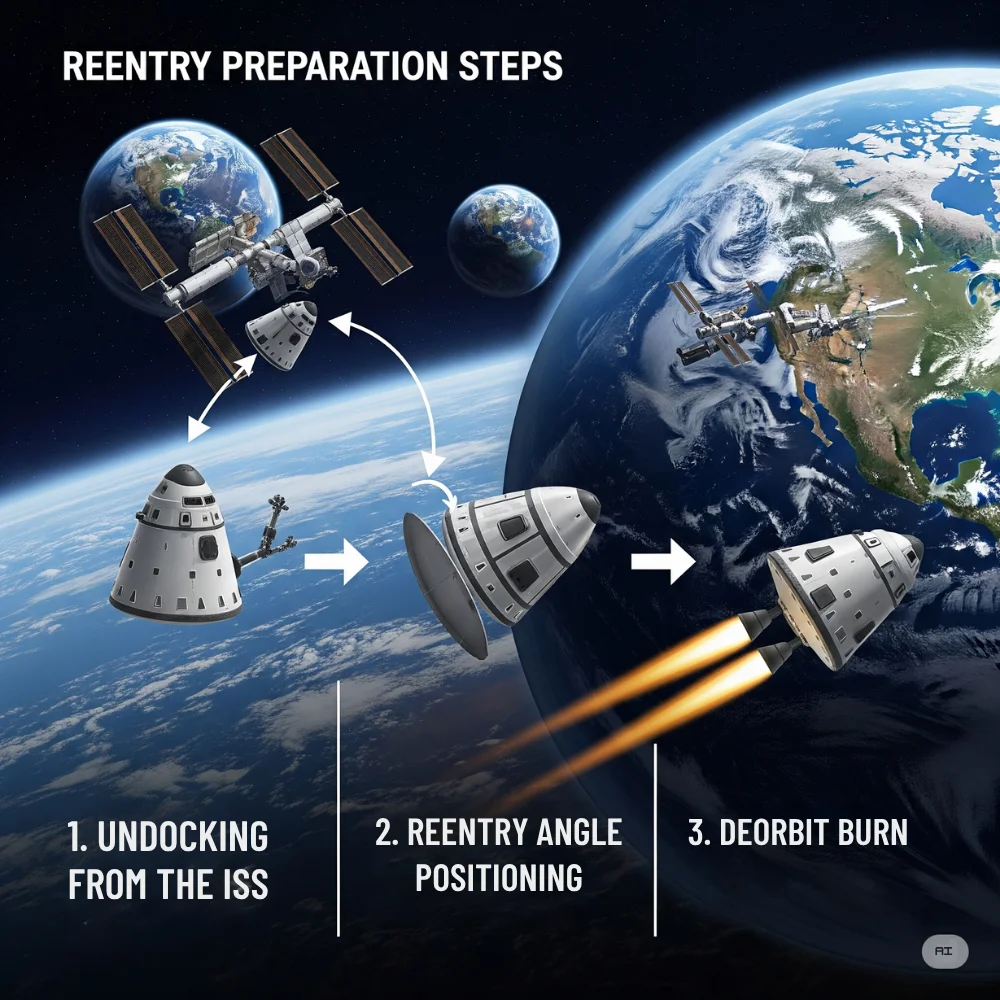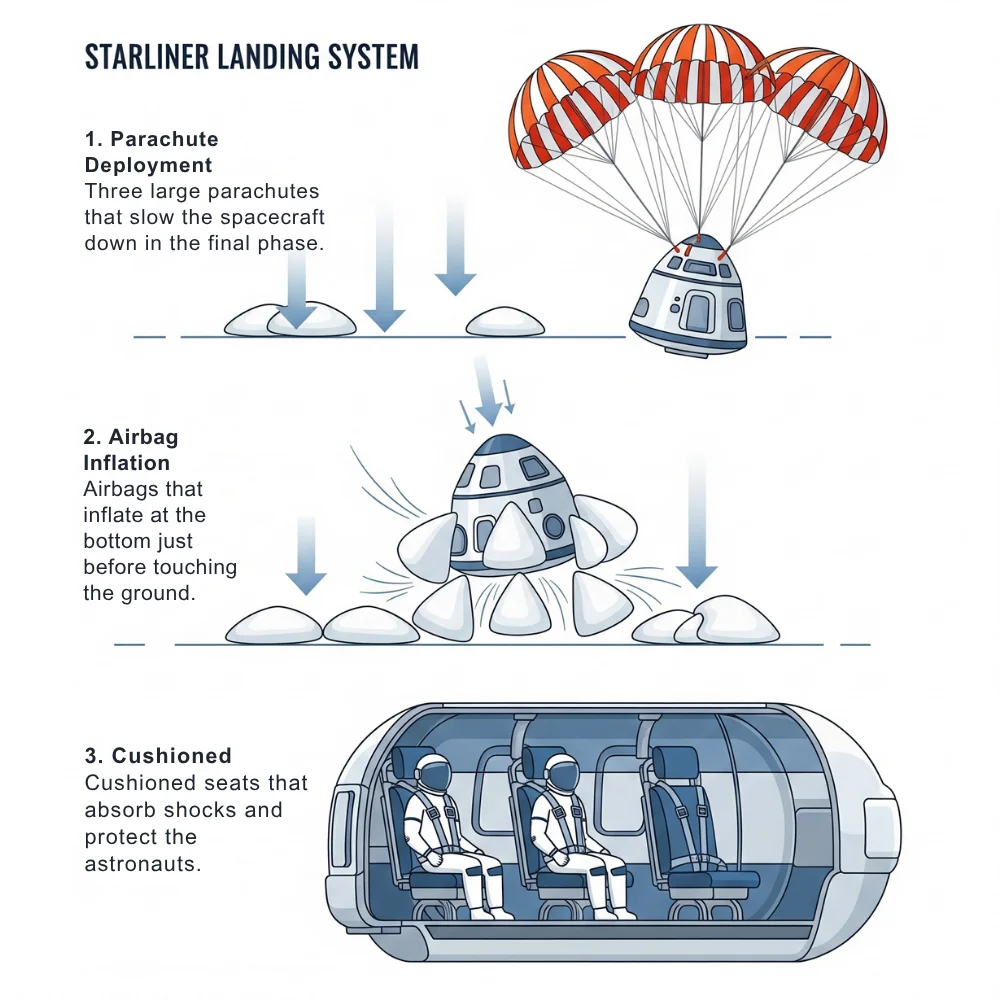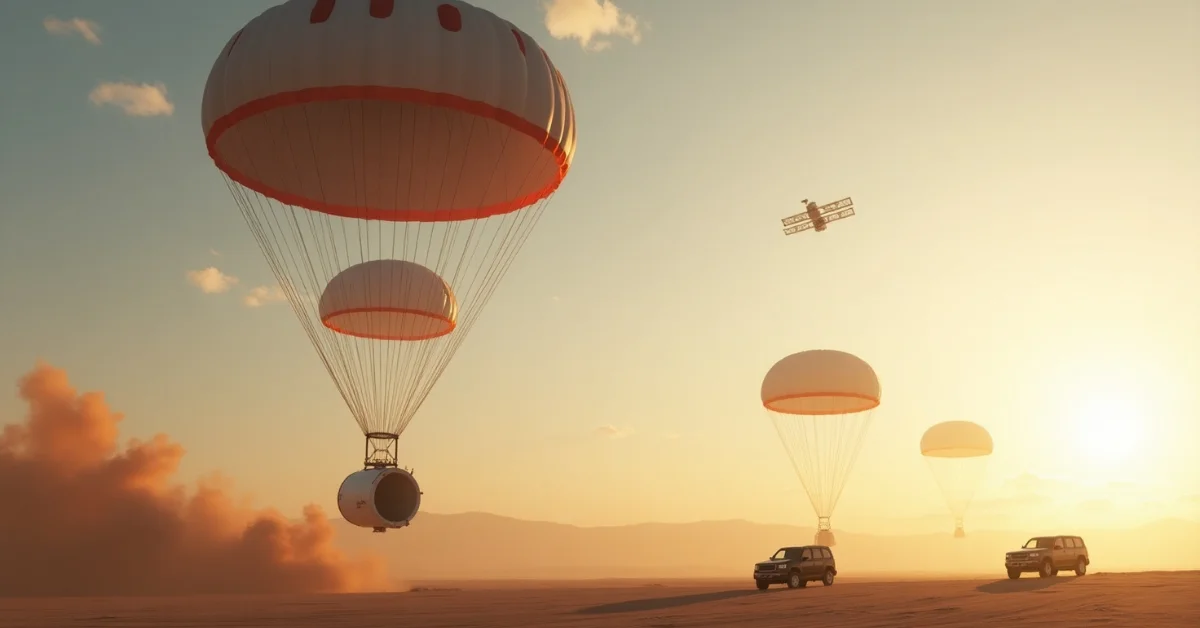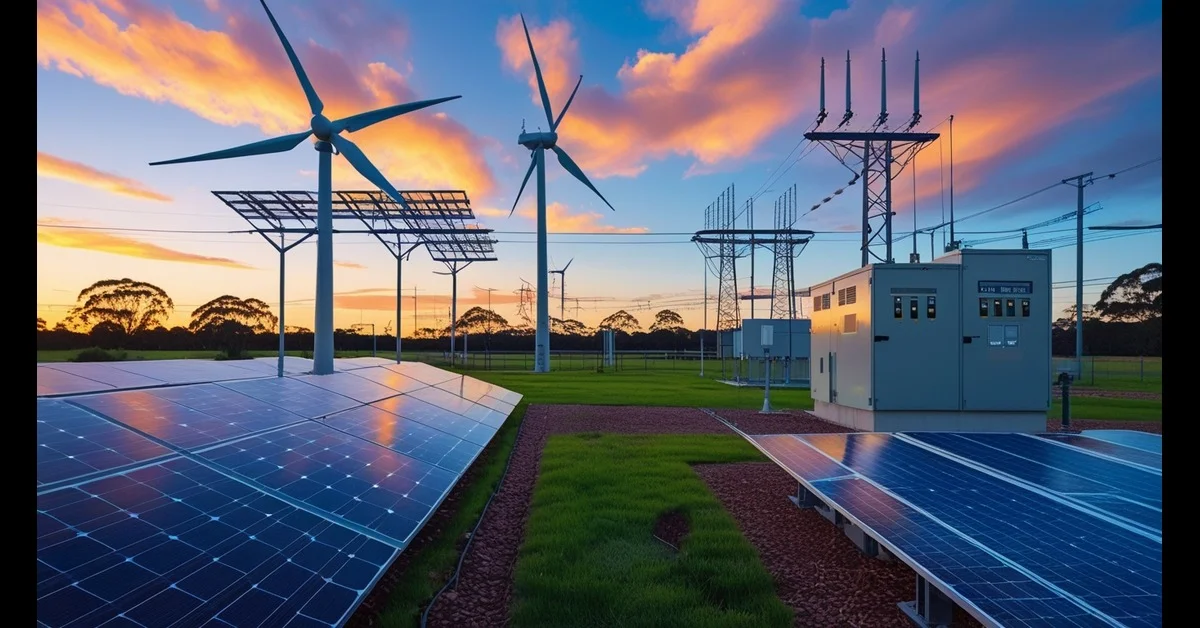The return of the Boeing Starliner to Earth is more than just a landing, it’s a big moment for space travel. Developed by Boeing in partnership with NASA, this advanced spacecraft is intended to transport astronauts safely between Earth and the International Space Station (ISS). Its safe return marks progress in creating more options for space transportation. Whether you’re a space fan or just curious, the Starliner’s landing is something worth learning about. In this article, we will explain what the Starliner is, how it returns to Earth, and why it matters.
What is the Boeing Starliner?
The Boeing Starliner, officially called CST-100 Starliner, is a crew capsule developed by Boeing under NASA’s Commercial Crew Program. It was made to carry astronauts safely between Earth and the ISS. It’s a reusable spacecraft, which means it can be used multiple times, lowering the cost of missions in the future.
Here are some quick facts about the Starliner:
- It is capable of carrying up to seven people, or a combination of crew members and cargo, depending on the mission
- The capsule is about 4.5 meters (15 feet) wide.
- It is built to be used up to 10 times with a six-month turnaround between flights.
- It launches on top of an Atlas V rocket.
Boeing designed the Starliner to compete with other commercial spacecraft, especially SpaceX’s Crew Dragon. Both companies aim to offer safe and efficient rides to space.
How the Starliner Prepares for Reentry?

Before the Starliner comes back to Earth, it performs several important steps to get ready for reentry. These steps are very detailed because reentry into Earth’s atmosphere is intense and dangerous.
The steps include:
- Undocking from the ISS: The capsule slowly separates from the space station and moves away using small thrusters.
- Positioning for reentry: The spacecraft rotates and adjusts its path to face the correct angle for entering Earth’s atmosphere.
- Firing the deorbit burn: This is when the engines push the capsule downward to begin falling toward Earth.
This process must be done with great care If the reentry angle is too steep, the spacecraft risks overheating and burning due to intense atmospheric friction. If it’s too shallow, it might bounce off the atmosphere like a stone on water.
The Heat of Reentry
As the Starliner capsule reenters Earth’s atmosphere, it encounters intense heat caused by friction with air particles. The outer surface can reach temperatures as high as 3,000°F (1,650°C). To withstand these extreme conditions, the capsule is equipped with a specially designed heat shield. This shield is made from materials that absorb and deflect the heat, keeping the interior safe.
As the capsule gets lower and slows down, the temperatures begin to drop. Eventually, it’s safe enough for the parachutes to open.
Parachutes and Airbags for Landing

Unlike some capsules that land in the ocean, the Starliner is designed to land on solid ground. This is a unique feature and makes it easier to recover the capsule quickly.
The landing system includes:
- Three large parachutes that slow the spacecraft down in the final phase.
- Airbags that inflate at the bottom just before touching the ground.
- Cushioned seats that absorb shocks and protect the astronauts.
This system allows the Starliner to land softly in places like the desert in New Mexico. After landing, teams quickly reach the capsule to help the crew out and bring the spacecraft back for inspection.
Why the Starliner’s Return Is So Important?
Each Starliner mission helps test systems and improve spaceflight safety. The return to Earth is one of the most difficult parts of the mission. A safe and smooth landing proves that the spacecraft can do its job well.
Here’s why it matters:
- Safety: Ensuring astronauts can return safely is the top priority.
- Testing systems: Every flight helps test heat shields, parachutes, communication, and landing gear.
- NASA partnerships: The success of Boeing helps support NASA’s goal of working with private companies for future missions.
- Alternatives to SpaceX: Having more than one way to reach space gives NASA flexibility in case of problems or delays.
Watching the Return Live
NASA often streams the return of spacecraft like the Starliner on its official website and YouTube channel. The coverage usually begins before undocking and continues until after landing.
Here’s what you can expect to see:
- Views of the spacecraft moving away from the ISS.
- Live updates as it enters the atmosphere.
- Stunning images of the parachutes deploying.
- Footage of the landing zone as the capsule touches down.
- Recovery teams approaching the spacecraft.
Watching it live can be exciting and emotional. You get to see science, engineering, and teamwork come together in real-time.
How Astronauts Feel During Reentry?
Even though the spacecraft is doing most of the work, reentry is a tough experience for astronauts. They go from zero gravity in space to strong forces pulling on their bodies as they fall back to Earth.
Some things they experience:
- G-forces: These are forces that push them back into their seats as the spacecraft slows down.
- Vibration and noise: The capsule shakes and gets loud due to wind and heat.
- Quick changes in pressure and temperature: Their suits and the capsule’s systems protect them from this.
Despite all that, astronauts are well-trained to stay calm and follow procedures. Medical teams are also ready to help as soon as they land.
What Happens After Landing?
After landing, recovery crews rush to the site. They make sure the area is safe and stable, then help the astronauts out of the capsule. Medical checks happen right away to make sure everyone is healthy.
The capsule itself is taken back to a special facility where experts:
- Inspect for damage.
- Check how well the systems worked.
- Prepare it for future missions.
Boeing collects lots of data from the mission to improve the next flight. Every detail, from how hot the shield got to how the parachutes opened, is studied.
Boeing and NASA’s Future Plans
Boeing hopes that after a few more test missions, the Starliner will be fully ready for regular astronaut flights. NASA wants to have multiple spacecraft options so that no one company becomes the only provider.
Here’s what’s planned:
- More crewed missions: If this return goes well, NASA will approve more missions with astronauts.
- International cooperation: Other countries might join flights or send their astronauts aboard Starliner.
- Moon and Mars planning: Lessons from Starliner help with bigger goals, like building spacecraft that can travel farther into space.
Boeing and NASA also learn from each flight how to cut costs, improve speed, and make space travel safer for everyone involved.
A Step Toward the Future of Space Travel
The Starliner’s return is more than just the end of a mission it marks progress toward a future with more space travel options. With each safe landing, we move closer to making spaceflight a regular part of life. It also shows how partnerships between NASA and private companies are changing the way we explore space.
Final Thoughts
The Boeing Starliner’s return shows how far space travel has come and where it’s headed. It proves we can safely bring astronauts home and keep pushing forward. With each mission, we build more trust in new technologies. As space becomes more open and shared, the future looks bright. Watching moments like this keeps us inspired to explore beyond Earth.



